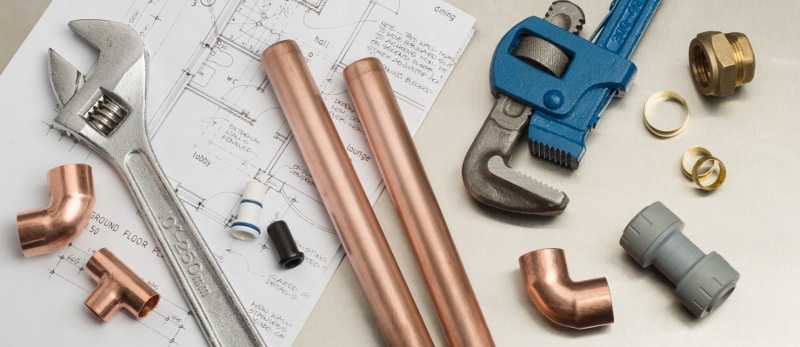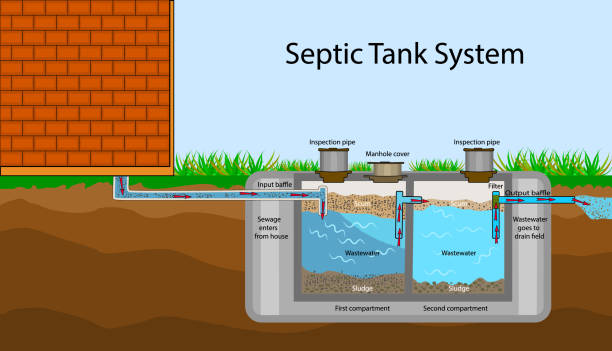Breaking Down Your Home's Plumbing System Anatomy
Breaking Down Your Home's Plumbing System Anatomy
Blog Article
What're your ideas with regards to Plumbing Installation 101: All You Need to Know?

Comprehending just how your home's pipes system functions is essential for every single homeowner. From delivering clean water for drinking, food preparation, and showering to securely getting rid of wastewater, a well-maintained plumbing system is essential for your household's health and wellness and convenience. In this thorough overview, we'll discover the intricate network that makes up your home's plumbing and offer suggestions on maintenance, upgrades, and dealing with typical problems.
Introduction
Your home's plumbing system is more than just a network of pipes; it's a complicated system that ensures you have access to clean water and effective wastewater removal. Understanding its elements and exactly how they collaborate can assist you avoid expensive repair work and guarantee whatever runs smoothly.
Basic Components of a Plumbing System
Pipes and Tubing
At the heart of your plumbing system are the pipes and tubing that lug water throughout your home. These can be constructed from numerous products such as copper, PVC, or PEX, each with its benefits in terms of resilience and cost-effectiveness.
Fixtures: Sinks, Toilets, Showers, etc.
Components like sinks, commodes, showers, and bathtubs are where water is used in your house. Recognizing just how these fixtures connect to the plumbing system aids in detecting issues and preparing upgrades.
Valves and Shut-off Points
Shutoffs manage the flow of water in your plumbing system. Shut-off valves are critical throughout emergencies or when you need to make repairs, permitting you to separate parts of the system without interrupting water flow to the whole home.
Supply Of Water System
Main Water Line
The major water line links your home to the community water supply or an exclusive well. It's where water enters your home and is distributed to various components.
Water Meter and Stress Regulator
The water meter actions your water use, while a pressure regulatory authority makes sure that water flows at a secure stress throughout your home's pipes system, avoiding damage to pipelines and fixtures.
Cold Water vs. Warm water Lines
Comprehending the distinction in between cold water lines, which supply water directly from the main, and warm water lines, which carry warmed water from the water heater, aids in fixing and planning for upgrades.
Water drainage System
Drain Piping and Traps
Drain pipes lug wastewater away from sinks, showers, and toilets to the drain or septic tank. Catches avoid sewage system gases from entering your home and also catch debris that can cause obstructions.
Ventilation Pipelines
Ventilation pipelines permit air into the water drainage system, avoiding suction that can slow water drainage and cause catches to empty. Appropriate air flow is vital for keeping the stability of your pipes system.
Significance of Correct Drainage
Making sure proper drain protects against backups and water damages. Regularly cleaning up drains pipes and maintaining traps can protect against costly repair services and expand the life of your plumbing system.
Water Heater
Sorts Of Water Heaters
Hot water heater can be tankless or typical tank-style. Tankless heating systems warmth water on demand, while storage tanks save warmed water for immediate usage.
Updating Your Plumbing System
Reasons for Upgrading
Updating to water-efficient components or changing old pipelines can improve water high quality, minimize water costs, and increase the value of your home.
Modern Plumbing Technologies and Their Benefits
Check out modern technologies like clever leak detectors, water-saving bathrooms, and energy-efficient hot water heater that can conserve cash and decrease ecological impact.
Cost Considerations and ROI
Determine the ahead of time prices versus long-term savings when thinking about plumbing upgrades. Numerous upgrades pay for themselves through reduced energy costs and less fixings.
Just How Water Heaters Attach to the Pipes System
Recognizing just how water heaters connect to both the cold water supply and hot water distribution lines helps in identifying problems like inadequate warm water or leakages.
Upkeep Tips for Water Heaters
On a regular basis purging your hot water heater to get rid of debris, examining the temperature level setups, and evaluating for leakages can expand its life-span and boost power performance.
Usual Pipes Concerns
Leakages and Their Reasons
Leaks can happen because of aging pipes, loose fittings, or high water stress. Dealing with leaks quickly avoids water damage and mold development.
Obstructions and Clogs
Blockages in drains and toilets are frequently caused by purging non-flushable things or a build-up of oil and hair. Utilizing drain displays and bearing in mind what decreases your drains can avoid clogs.
Indications of Plumbing Problems to Expect
Low water stress, slow-moving drains, foul odors, or unusually high water bills are indicators of prospective plumbing problems that need to be attended to quickly.
Plumbing Upkeep Tips
Routine Evaluations and Checks
Schedule yearly plumbing inspections to capture problems early. Search for indicators of leakages, corrosion, or mineral buildup in taps and showerheads.
DIY Upkeep Tasks
Basic tasks like cleansing tap aerators, checking for commode leaks using color tablets, or shielding subjected pipes in cool climates can protect against significant plumbing concerns.
When to Call a Professional Plumbing
Know when a plumbing problem requires specialist knowledge. Trying complicated repairs without appropriate knowledge can bring about even more damage and greater repair work prices.
Tips for Decreasing Water Use
Easy behaviors like repairing leakages quickly, taking much shorter showers, and running full lots of laundry and meals can conserve water and lower your energy bills.
Eco-Friendly Pipes Options
Consider lasting pipes materials like bamboo for floor covering, which is durable and environmentally friendly, or recycled glass for kitchen counters.
Emergency Preparedness
Actions to Take During a Pipes Emergency situation
Know where your shut-off valves lie and how to shut off the water in case of a burst pipe or significant leak.
Significance of Having Emergency Situation Contacts Helpful
Maintain contact info for neighborhood plumbers or emergency solutions readily available for fast feedback during a plumbing dilemma.
Ecological Impact and Conservation
Water-Saving Components and Devices
Installing low-flow faucets, showerheads, and bathrooms can dramatically reduce water usage without compromising efficiency.
Do It Yourself Emergency Situation Fixes (When Applicable).
Short-term repairs like making use of air duct tape to patch a leaking pipe or putting a bucket under a leaking tap can decrease damages until a professional plumbing arrives.
Final thought.
Comprehending the composition of your home's pipes system empowers you to maintain it efficiently, saving money and time on repair services. By adhering to normal upkeep regimens and remaining educated concerning modern plumbing technologies, you can ensure your plumbing system operates efficiently for several years ahead.
Understanding Your Home Plumbing System: A Comprehensive Guide
Plumbing System: The Lifeline of Your Home
At its core, the plumbing system is designed to perform two primary functions: bring fresh water into your home and remove wastewater. The system is a network of pipes, fixtures, and other components that transport water and sewage. Residential plumbing systems include potable water supply lines, drain-waste-vent (DWV) systems, and various plumbing fixtures that make water use in daily tasks possible.
Key Components:
Water Supply: This part of your plumbing system brings municipal water into your home, passing through the main water supply line. It s responsible for supplying all water needs, from drinking to bathing.
Drainage System: It carries waste and water away from your home to the sewer or septic system. This system includes all the piping within your home that leads to external sewage or septic systems.
Vent System: An essential yet often overlooked component, the vent system allows sewer gases to escape and lets air into the drainpipes, ensuring water and waste move correctly through the system.
Fixture: More Than Just Taps and Toilets
Plumbing fixtures are the most interactive parts of the plumbing system, including faucets, showers, toilets, and sinks. Each fixture is connected to the plumbing system and plays a role in either the delivery of freshwater or the disposal of waste and wastewater.
Types of Fixtures:
Faucets and Sinks: Used for washing hands, dishes, and other daily water needs. Toilets: Dispose of human waste through the sewage system. Bathtubs and Showers: Provide bathing facilities, requiring both hot and cold water supply. Water Supply: The Source of Life
The water supply system is a critical component, ensuring that potable water is available throughout your home for various uses, including drinking, cooking, and cleaning. This system consists of pipes that distribute water to different parts of the house, controlled by valves to regulate the water flow.
Types of Plumbing: Materials and Methods
Various types of plumbing systems and materials are used in residential settings, each with its advantages and applications. From copper and PVC pipes for water supply to cast iron and ABS for drainage, the choice of materials can impact the longevity and efficiency of your plumbing system.
https://intownplumbingtx.com/articles/home-plumbing-system-guide/

We hope you liked our part on Understanding Your Home's Plumbing Anatomy. Thank you for taking the time to read our piece. If you appreciated our post if you please do not forget to pass it around. We take joy in reading our article about Anatomy of a House: Understanding the Components.
Schedule Report this page